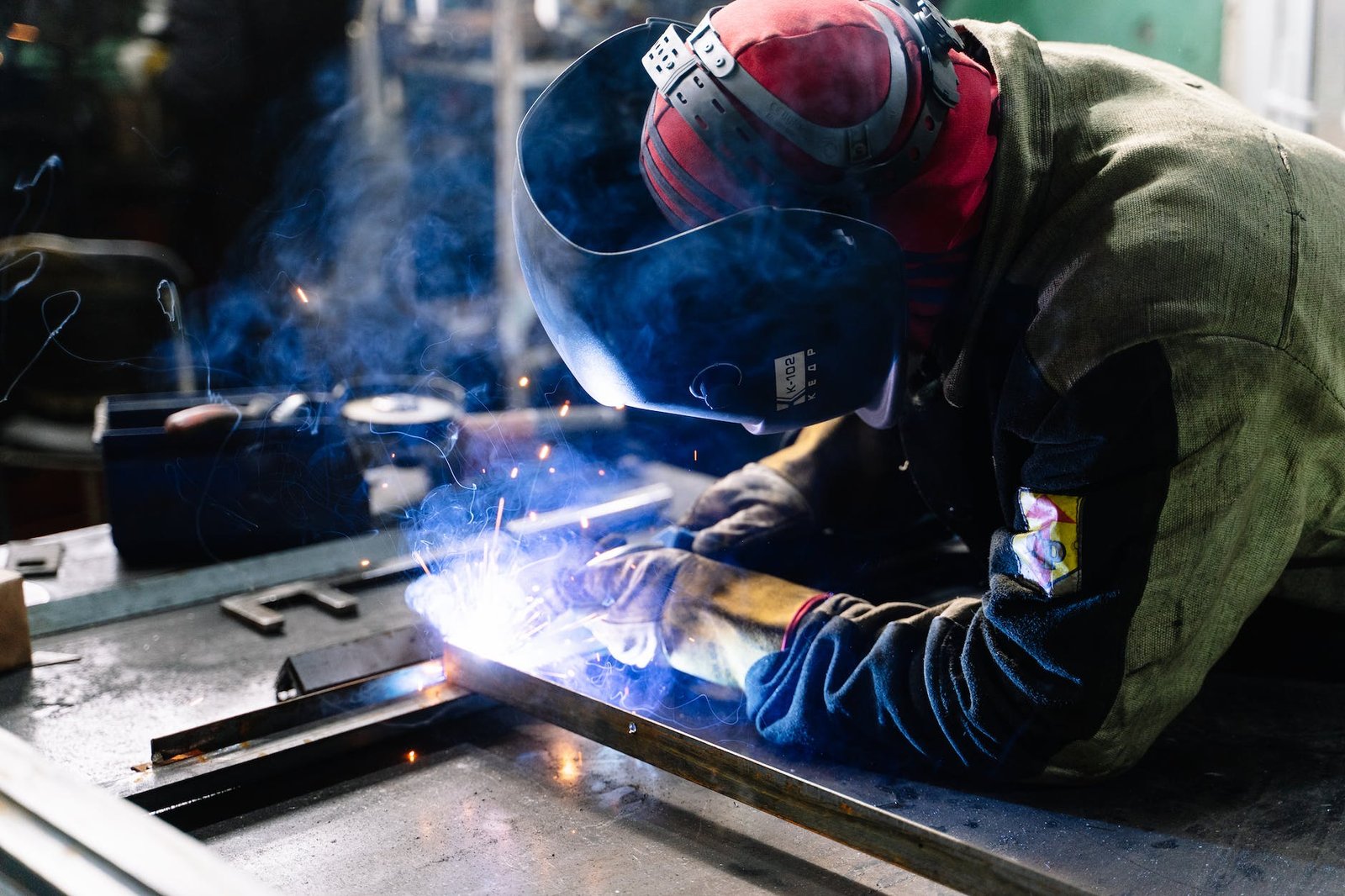Welcome to our article on the connection between labor and economic growth. Labor is a crucial factor in the development of any economy, and understanding its impact on economic growth is vital for policymakers and businesses alike. In this article, we will discuss the role of labor in economic growth, the impact of labor on economic development, labor market dynamics and economic expansion, the importance of the labor force and employment in economic progress, and the role of labor dynamics in economic growth.
First, let’s define what we mean by labor. Labor refers to the workforce involved in economic activity, including employees and self-employed individuals. The productivity and efficiency of this workforce directly impact the output and growth of the economy.

Key Takeaways:
- Labor is an essential factor in economic growth.
- The workforce’s productivity and efficiency impact the output and growth of the economy.
- In this article, we will cover the impact of labor on economic growth, labor market dynamics and economic expansion, and the importance of labor in economic growth.
The Impact of Labor on Economic Growth
It’s no secret that labor plays a crucial role in economic development. The quantity and quality of labor available to a nation’s economy can directly affect its growth and prosperity. In this section, we’ll take a closer look at the impact of labor on economic growth and how labor growth and economic development are closely related.
When discussing the impact of labor on economic growth, it’s important to note that labor encompasses a wide range of factors, including population growth, education and skills training, human capital, and the availability of job opportunities. These factors are critical in determining a nation’s economic growth and development.
One key way that labor affects economic growth is through productivity. When there are more workers available to a nation’s economy, it has the potential to produce more goods and services. However, the quality of those workers is equally important. Workers who are skilled and well-educated are typically more productive than those who are not, leading to higher economic growth and development.

Another important way that labor affects economic growth is through innovation. When more workers are available, there is a greater potential for innovation and creativity. As workers develop new ideas and technologies, this can lead to new industries and job opportunities, further fueling economic growth and development.
It’s also worth noting that the impact of labor on economic growth is not limited to the quantity of workers available. The quality of job opportunities is also critical. In a nation where there are high-paying, stable jobs available, workers are more likely to be motivated to work hard and contribute to the economy. This can lead to higher levels of economic growth and development.
The Role of Labor in Economic Growth
Overall, the impact of labor on economic growth is significant. From productivity and innovation to job opportunities and motivation, labor plays a crucial role in determining the trajectory of a nation’s economy. In the next section, we’ll take a closer look at the role of labor in economic growth and how it has evolved.
Labor Market Dynamics and Economic Performance
When analyzing the relationship between labor and economic growth, it’s impossible to ignore the significance of the labor market. The labor market refers to the mechanisms and structures that affect the supply and demand for workers, including factors such as education, training, immigration, demographics, and technological advancements. A well-functioning labor market can be a major driver of economic expansion, while a malfunctioning labor market can result in stagnant growth.
Labor market dynamics and economic expansion are closely intertwined. When the labor market is tight, meaning there are more job openings than qualified workers, employers are forced to raise wages and become more competitive to attract and retain employees. This can lead to increased productivity and innovation, ultimately driving economic growth. Conversely, employers have the upper hand when the labor market is slack, meaning there are more workers than there are job openings. They can keep wages low, decreasing consumer demand and lowering economic growth.
Furthermore, labor market dynamics can have a significant impact on income inequality. When the labor market is tight, low-skilled workers and historically marginalized groups such as women and minorities tend to see the biggest wage gains, which can help reduce income inequality. However, when the labor market is slack, these groups are often the first to lose their jobs or see their wages stagnate, exacerbating income inequality.

The labor market is a complex system that is influenced by a wide range of factors, including government policies, technological advancements, and demographic trends. Understanding the nuances of labor market dynamics is key to predicting and influencing economic performance.
The Role of Labor in Economic Growth
There is no doubt that labor plays a critical role in economic growth. It is the foundation of any economy, and its productivity determines a country’s economic performance. Labor is not just a factor of production but also a market force that influences economic expansion. Its role in economic growth cannot be overstated.
One of the primary ways labor contributes to economic growth is by increasing production. Productivity growth, which is mainly driven by labor, raises output levels and reduces costs, resulting in increased profits. This, in turn, promotes investment in the economy, leading to further growth.
Labor also fosters technological progress and innovation. A well-trained, educated, and skilled workforce can drive technological advancements and enhance the economy’s competitiveness. Research and development efforts driven by labor can lead to new products, improved manufacturing processes, and more efficient distribution channels.

Furthermore, labor can influence economic growth through its impact on consumer demand. As labor incomes rise, so does consumer confidence and spending, which drives economic growth. A robust labor market can create a growth cycle, increasing demand and job creation.
Finally, labor can provide social and political stability, reinforcing institutions and supporting economic growth. A strong labor market can discourage social unrest, reduce risk and uncertainty, increase investor confidence, and promote economic expansion. Ensuring that labor is adequately compensated, protected, and engaged can lead to a virtuous cycle of growth, benefiting both workers and the economy.
The Key Takeaway
As we have seen, labor is a crucial element in economic growth. Its role in driving productivity, fostering innovation, and increasing consumer demand cannot be overstated. To achieve sustainable economic growth, policymakers must prioritize labor, supporting education and training programs, protecting workers’ rights, and promoting full employment. By doing so, they can unlock the full potential of labor and facilitate long-term economic growth that benefits all members of society.
Labor Force and Economic Progress
The labor force plays a vital role in economic progress and growth. It is the backbone of industries that drive the economy forward. Economic progress leads to an increase in employment opportunities, which in turn leads to an increase in the labor force.
As the labor force grows, it contributes to the growth of the economy. With the increase in the number of workers, there are more resources available to produce goods and services, leading to a rise in production and an increase in economic output. This leads to an increase in the standard of living of the population and creates a positive feedback loop where a growing economy leads to more jobs and vice versa.
Additionally, a well-functioning labor market is essential for economic expansion. The labor market is the mechanism through which workers and employers interact to determine wages and employment levels. A competitive labor market ensures that wages are set at the appropriate level, encouraging workers to enter the labor force and increasing the supply of labor.

Moreover, a skilled labor force can enhance economic growth and development. Skilled workers are more productive and can contribute more to the economy. Governments and businesses must invest in workforce development programs to provide workers with the necessary skills to keep up with technological advancements and meet the demands of a changing economy.
In conclusion, a growing labor force is essential for economic progress and development. A competitive labor market and a skilled workforce are necessary to maintain economic growth and increase production. The relationship between the labor force and economic progress is interdependent, and both must work together for sustained economic growth.
Employment and Economic Growth
Employment and economic growth have a significant correlation. Employment is one of the key factors that drive economic growth in a country. When more people are employed, they have more money to spend, which in turn benefits the economy. When people are unemployed, they don’t have the purchasing power to buy goods and services, which can slow down economic growth. As a result, policymakers often focus on creating jobs as a means of driving economic growth.
One of the ways that employment can drive economic growth is through increased productivity. When people are employed, they are more likely to be productive. They have a sense of purpose and feel like they are contributing to society, which can motivate them to work harder. Increased productivity can lead to more goods and services being produced, which can benefit the overall economy.
However, it is important to note that not all employment is equal. The quality of jobs is also important. Low-wage jobs, with minimal benefits and poor working conditions, can negatively impact economic growth. In contrast, high-quality jobs that pay well and provide benefits can benefit both employees and the overall economy. These jobs can attract highly skilled workers who can drive innovation and improve productivity, leading to economic growth.

In conclusion, employment is a crucial factor in driving economic growth. Policies that focus on creating high-quality jobs with good pay and benefits can benefit both employees and the economy. By investing in employment, policymakers can support economic growth and improve overall well-being in society.
Labor Dynamics and Economic Growth
Understanding the dynamics of the labor market is essential to grasp how labor affects economic growth. The behavior of the labor market can contribute significantly to or hinder the economic progress of a country. Labor dynamics are determined by factors such as wages, skills, labor force participation rate, and employment type, among others. These factors can positively or negatively impact economic growth and the overall performance of a country’s economy.
For example, high wages can attract skilled workers, leading to increased productivity and, ultimately, higher economic growth. However, excessively high wages can lead to a rise in labor costs and negatively affect the competitiveness of businesses, potentially driving away investors.
Another vital factor in labor dynamics is the skillset of workers. Skilled labor often leads to the adoption of new technologies, which can lead to better quality products, lower costs, and ultimately higher profits and economic growth.
| Labor Force | Economic Progress |
|---|---|
| High labor force participation rate | Decline in production, consumption, and economic growth |
| Low labor force participation rate | Decline in production, consumption and economic growth |
The labor force participation rate is a measure of the percentage of the working-age population that is employed or actively seeking employment. A high labor force participation rate indicates a healthy labor market, which can contribute to higher economic growth and development. Similarly, a low labor force participation rate could indicate a lack of opportunities, leading to a decline in production, consumption, and economic growth.
Employment type is another factor that affects labor dynamics. For instance, permanent employment offers job security, which can lead to increased productivity, as workers are more likely to invest time and effort in their jobs. On the other hand, temporary employment may lead to reduced productivity, as workers feel less invested in their roles and may not have the same level of loyalty towards their employers.
In conclusion, understanding labor dynamics is critical for understanding how labor affects economic growth. A healthy labor market can contribute to higher economic growth and development, while a sluggish labor market can hinder economic progress. Governments and policymakers need to create and implement policies that promote a healthy and dynamic labor market to ensure long-term economic growth.

The Importance of Labor in Economic Growth
It is widely acknowledged that labor plays a crucial role in promoting economic growth. The availability of skilled and productive workers is critical to the success of any business, industry, or economy. At a macro level, labor has a direct impact on the overall economic output and performance of a country. In this section, we will explore the significance of labor in economic growth and the factors that contribute to its importance.
First and foremost, labor is the driving force behind any economic activity. Without skilled and motivated workers, businesses cannot produce goods, provide services, or innovate. As such, the availability of a productive labor force is a necessary condition for economic growth. In today’s globalized economy, countries with an abundant supply of skilled labor tend to be more competitive and thriving in the global market.
Another crucial aspect of labor’s importance in economic growth is its impact on innovation and technology. Skilled and educated workers are more likely to come up with new ideas and innovations that can drive economic progress. For example, the development of new software, medical treatments, or renewable energy sources requires a highly trained and skilled workforce. As such, governments and businesses must invest in education and training programs to promote innovation and technological progress.
| Did you know? |
|---|
| The U.S. Bureau of Labor Statistics estimates that employment in healthcare will grow by 15% from 2019 to 2029 due to an aging population and advances in medical technology. |
Labor also has a direct impact on consumer spending. When workers are employed and earning a steady income, they are more likely to spend money on goods and services, driving demand and stimulating economic growth. On the other hand, high unemployment rates can lead to a decrease in consumer spending, causing a slowdown in economic activity.
Finally, labor is also crucial for addressing income inequality and promoting social mobility. A strong labor market with high employment rates and good job opportunities can provide a pathway for workers to move up the economic ladder and achieve better standards of living. This, in turn, can contribute to more equal distribution of wealth and income in a society.

Overall, the importance of labor in economic growth cannot be overstated. Productive, skilled, and motivated workers are the backbone of any successful economy, and governments, businesses, and individuals must invest in promoting education, training, and job opportunities to drive economic progress and prosperity.
Labor Dynamics and Economic Growth
The relationship between labor and economic growth is a complex one. Labor is one of the primary factors of production, alongside capital, land, and technology. As such, it plays a crucial role in the development and expansion of the economy. In this article, we have examined the impact of labor on economic growth, labor market dynamics, economic performance, the role of labor in economic growth, and the importance of labor in economic growth.
The labor force is a critical element of economic progress. It is the source of labor supply to businesses and industries. The labor force is a significant driver of economic growth, and a growing labor force is essential for economic expansion. A growing labor force can be attributed to factors such as population growth, immigration, and increasing labor force participation.
Employment and Economic Growth
Employment is an essential aspect of labor dynamics and economic growth. It is the primary means by which individuals participate in the labor market and contribute to the economy. Employment and economic growth are positively correlated; as employment levels increase, so does the output of goods and services in the economy. In turn, this leads to increased productivity, higher wages, and a higher standard of living for individuals.
Labor Market Dynamics and Economic Performance
The labor market comprises various groups of workers, including full-time, part-time, temporary, and self-employed workers. The availability of jobs, wages, and working conditions influence the behavior of workers and employers and impact economic performance. High-quality jobs, decent wages, and safe working environments are essential components of economic growth.
The Role of Labor in Economic Growth
Labor is a fundamental input in the production of goods and services. The productivity of labor depends on several factors, including education, training, skills, and experience. Employers invest in their employees to improve productivity and the quality of goods and services produced. A highly skilled labor force drives innovation and technological advancements, leading to increased productivity and economic growth.
The Importance of Labor in Economic Growth
Labor is a vital component in the growth of any economy. It is a key factor of production and a driver of economic expansion. The availability of jobs, wages, and working conditions are crucial for economic growth. A skilled and educated workforce is essential for the development of a knowledge-based economy that drives innovation and economic growth. Investing in labor is, therefore, crucial to long-term economic growth and prosperity.
Conclusion
In conclusion, labor is an integral part of economic growth. Employment, labor market dynamics, and the role of labor are all interconnected and influence economic performance. The importance of labor in economic growth cannot be overstated, and investing in labor is crucial for long-term economic success. As the economy continues to evolve, policymakers, businesses, and individuals must prioritize the development of a skilled and educated labor force for a prosperous future.
FAQ
Q: What is the relationship between labor and economic growth?
A: Labor plays a crucial role in driving economic growth. As more people participate in the labor force, productivity increases, leading to higher output and overall economic expansion.
Q: How does labor impact economic growth?
A: Labor growth and economic development are closely intertwined. When there is a skilled and efficient workforce, businesses can operate more effectively, leading to increased production and economic growth.
Q: What is the connection between the labor market and economic performance?
A: Labor market dynamics have a significant impact on economic expansion. Factors such as employment rates, wage levels, and job stability can affect consumer spending, investment, and overall economic performance.
Q: What role does labor play in economic growth?
A: Labor’s role in economic growth is substantial. A well-educated and skilled workforce contributes to innovation, productivity, and competitiveness, which are essential drivers of economic expansion.
Q: How does the labor force contribute to economic progress?
A: The labor force is a critical component of economic progress. As the number of working-age individuals actively participating in the labor market increases, there are more opportunities for generating income, investment, and economic growth.
Q: What is the relationship between employment and economic growth?
A: Employment and economic growth are closely interconnected. When there is a higher rate of employment, it signals a healthy economy with increased consumer spending power, which drives economic expansion.
Q: How do labor dynamics impact economic growth?
A: Labor dynamics, including factors such as workforce demographics, skills development, and labor market flexibility, can influence economic growth. A dynamic labor market that adapts to changing conditions and demands is essential for sustained economic expansion.
Q: Why is labor important for economic growth?
A: Labor is crucial for economic growth because it provides the human capital necessary to drive productivity and innovation. Skilled workers contribute to increased efficiency, higher output, and overall economic development.
Q: How does labor affect the overall economy?
A: The labor market and economic growth are closely connected. Labor affects the overall economy by influencing factors such as employment rates, wages, skills development, and workforce productivity, which all contribute to economic expansion and prosperity.









Leave a Reply